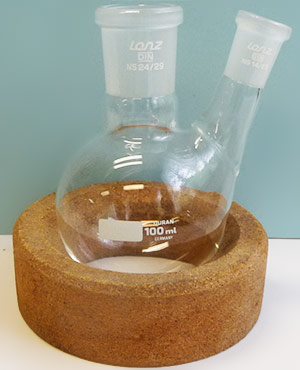How should I choose my lab equipment?
.jpg)

The boiling flask
Description
The boiling flask is a rounded container. There are flat-bottomed and round-bottomed flasks. Flat-bottom ones have the advantage that they can be placed directly on a bench - but it can be tricky to recover their entire contents; on the other hand, round-bottomed flasks make it easier to recover their contents, but they require a flask holder to be placed on a bench.
A boiling flask is always made of glass because it is often heated during use - so they are often made of Pyrex or Duran. The most classic round-bottom flask is single-neck, but there are also twin-neck or triple-neck formats for certain uses.
Some round-bottom flasks have a taper joint neck, so that they can be hermetically sealed with a ground glass stopper or by a cooler, or placed in a desired device (e.g. rotary evaporator, Soxhlet extractor, etc.).
Uses
In analytical chemistry, boiling flasks are generally used in the following cases:
- Evaporation of a solvent on a rotary evaporator: the solvent to be evaporated is placed in the flask, which is then put on the evaporator
- Refluxing a liquid (e.g. heating a solvent in a Soxhlet extraction system)






